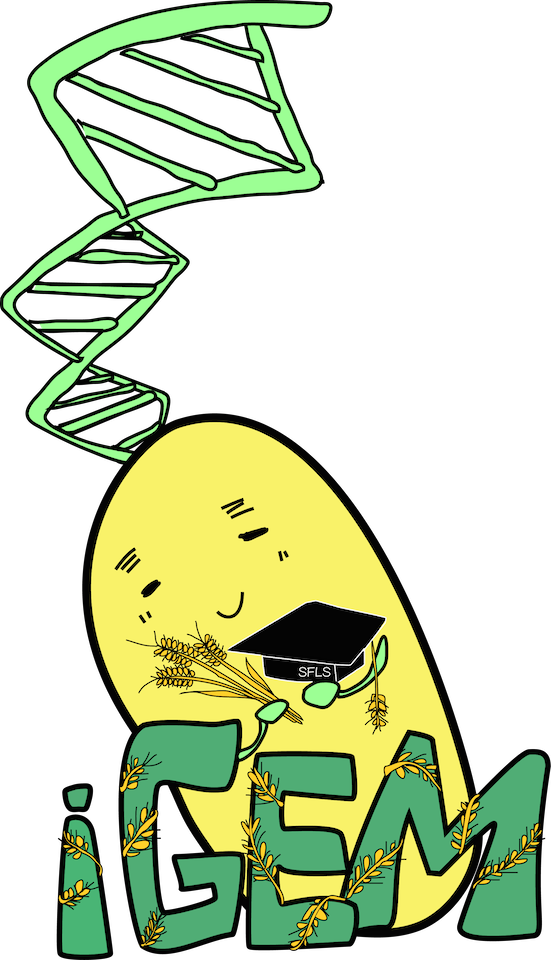Team:Shenzhen SFLS
From 2014hs.igem.org
- a team description
- project description
- safety information (did your team take a safety training course? were you supervised in the lab?)
- team attribution (who did what part of your project?)
- lab notebook
- sponsor information
- other information
Example: 2013hs.igem.org/Team:Shenzhen_SFLS/Our_Pets
| You can write a background of your team here. Give us a background of your team, the members, etc. Or tell us more about something of your choosing. | |
|
Tell us more about your project. Give us background. Use this as the abstract of your project. Be descriptive but concise (1-2 paragraphs) | File:Shenzhen SFLS team.png Your team picture |
| Team Shenzhen_SFLS |
| Official Team Profile |
|---|
Contents |
Team
Tell us about your team, your school!
Project
Project Description
Shenzhen_SFLS 2014 project description
To begin with
Aflatoxin B1 generated by Aspergillus flavus is a kind of lethal toxin that always contaminates the grains we eat. Aimed to minimize the harm, our project consists of 3 parts from different aspects: killing Aspergillus flavus, neutralizing aflatoxin B1, and reducing the virulence of aflatoxin B1 by turning it into weaker aflatoxin M1.
Killing Aspergillus flavus
Our engineered bacteria will increase its output of antifungal compounds (which can kill Aspergillus flavus) drastically after being inplanted the engineered circuit. Therefore, this process greatly improves the efficiency of the delimitation of Aspergillus flavus.
Neutralizing Aflatoxin B1
By optimizing the circuit, aflatoxin will be combined with certain antibodies, and further be immobilized on E.coli’s membrane protein.
Transforming toxic aflatoxin B1 into aflatoxin M1
It will produce astaxanthin to transform fatal aflatoxin B1 into less toxic aflatoxin M1 after its circuit is constructed. In this way, those toxicated grains would be detoxified and would even reach edible standard. We are now trying to improve the yield of astaxant.
In conclusion
As long as the plan is carried out smoothly, three circuits would be connected into a system. The system will start to produce antifungal compounds automatically once aflatoxin B1 is detected. At the same time, it will trigger E.coli to produce the antibody. Once the antibody is immobilized on the membrane protein, astaxanthin will start to be generated by. As a result, aflatoxin B1 is transformed into aflatoxin M1.
If our project is carried out successfully and is applied in real life, human beings would benefit from it to a great extent. In fact, aflatoxin contamination in agriculture and animal husbandry causes a loss of hundreds of million dollars per year. Despite the harsh current situation, we still believe that our relentless effort will bring the problem to an end. The contaminated grains would be detoxified until they are eligible. To be optimistic, many problems the whole population face about human health such as the storage of grains, the food's safety and medical hygiene problems would be solved by our project.
Notebook
Show us how you spent your days.
Results/Conclusions
What did you achieve over the course of your semester?
Safety
What safety precautions did your team take? Did you take a safety training course? Were you supervised at all times in the lab?
Attributions
Who worked on what?
Human Practices
What impact does/will your project have on the public?
Fun!
What was your favorite team snack?? Have a picture of your team mascot?
<forum_subtle />
 "
"
